
Neri&Hu Design a Café in Downtown Shanghai That Highlights the City's Architectural Heritage
Words by Yatzer
Location
Shanghai, China
Neri&Hu Design a Café in Downtown Shanghai That Highlights the City's Architectural Heritage
Words by Yatzer
Shanghai, China
Shanghai, China
Location
Located inside the recently refurbished Zhang Yuan development in downtown Shanghai's Jing'an district - one of the earliest public and commercial spaces in modern China that dates back to the end of the 19th century—the latest outpost of American speciality coffee roaster and retailer Blue Bottle Coffee initiates a dialogue between the city’s rich history and the contemporary urban social realm courtesy of Shanghai-based architecture studio Neri&Hu’s thoughtful approach.
Having to contend with strict preservation guidelines that prohibit any intervention to the existing masonry building shell, the team has chosen instead to insert a free-standing metallic structure at the centre of the space to house the bar counter around which patrons can stroll, sit and socialize, not unlike the leisurely social moments that the historic premises once fostered more than a century ago.

Photography by Zhu Runzi.
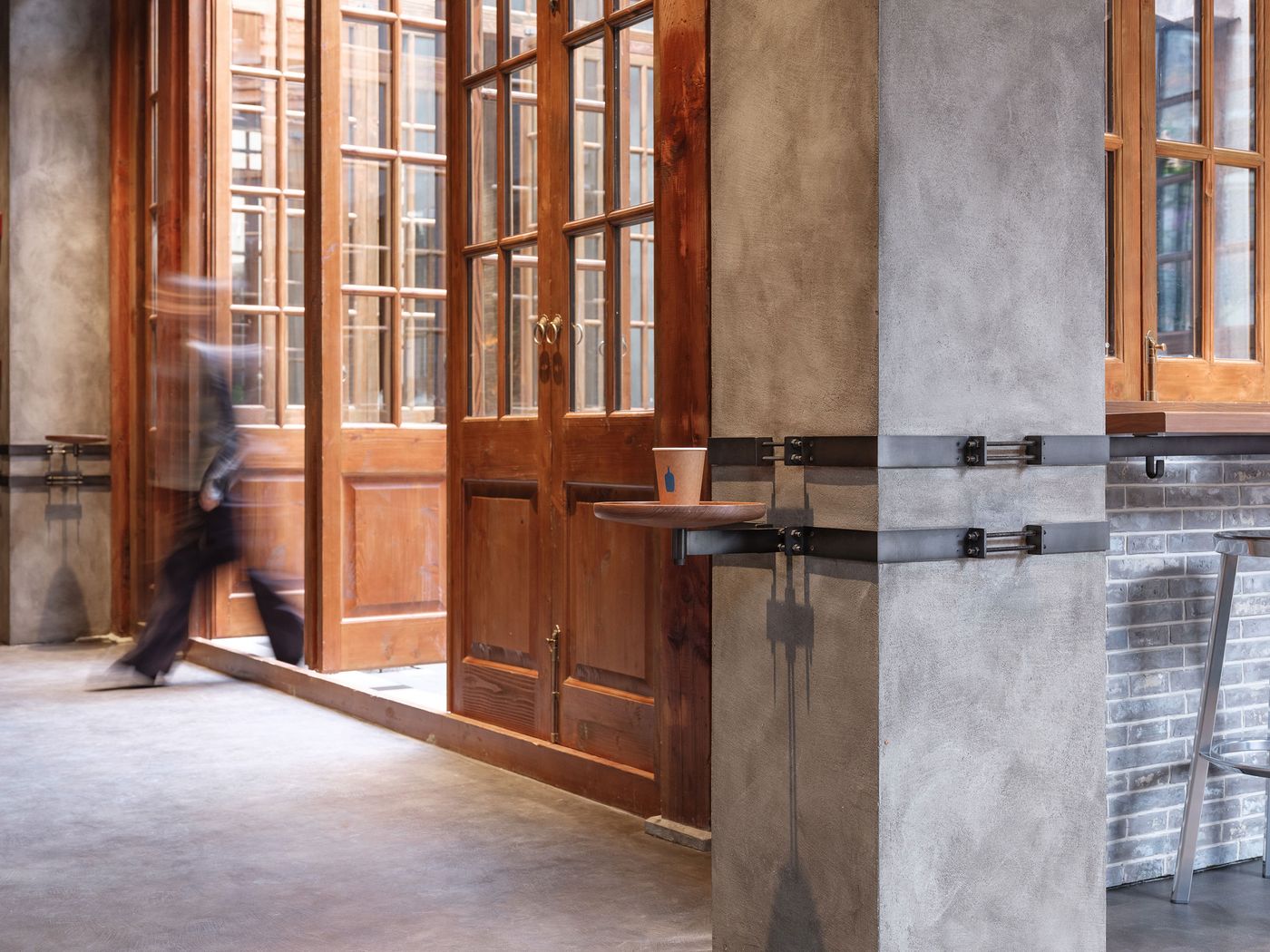
Photography by Zhu Runzi.
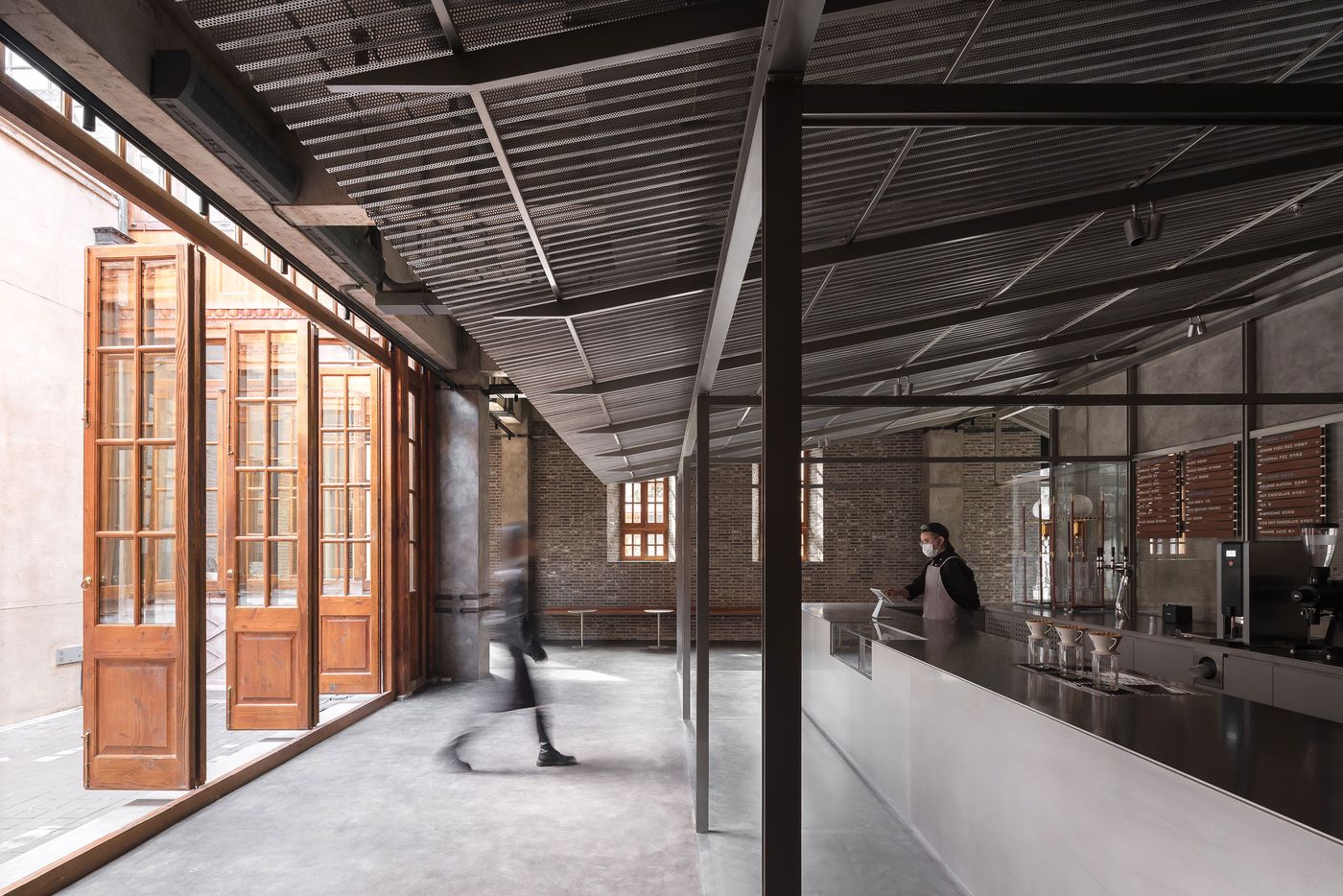
Photography by Zhu Runzi.
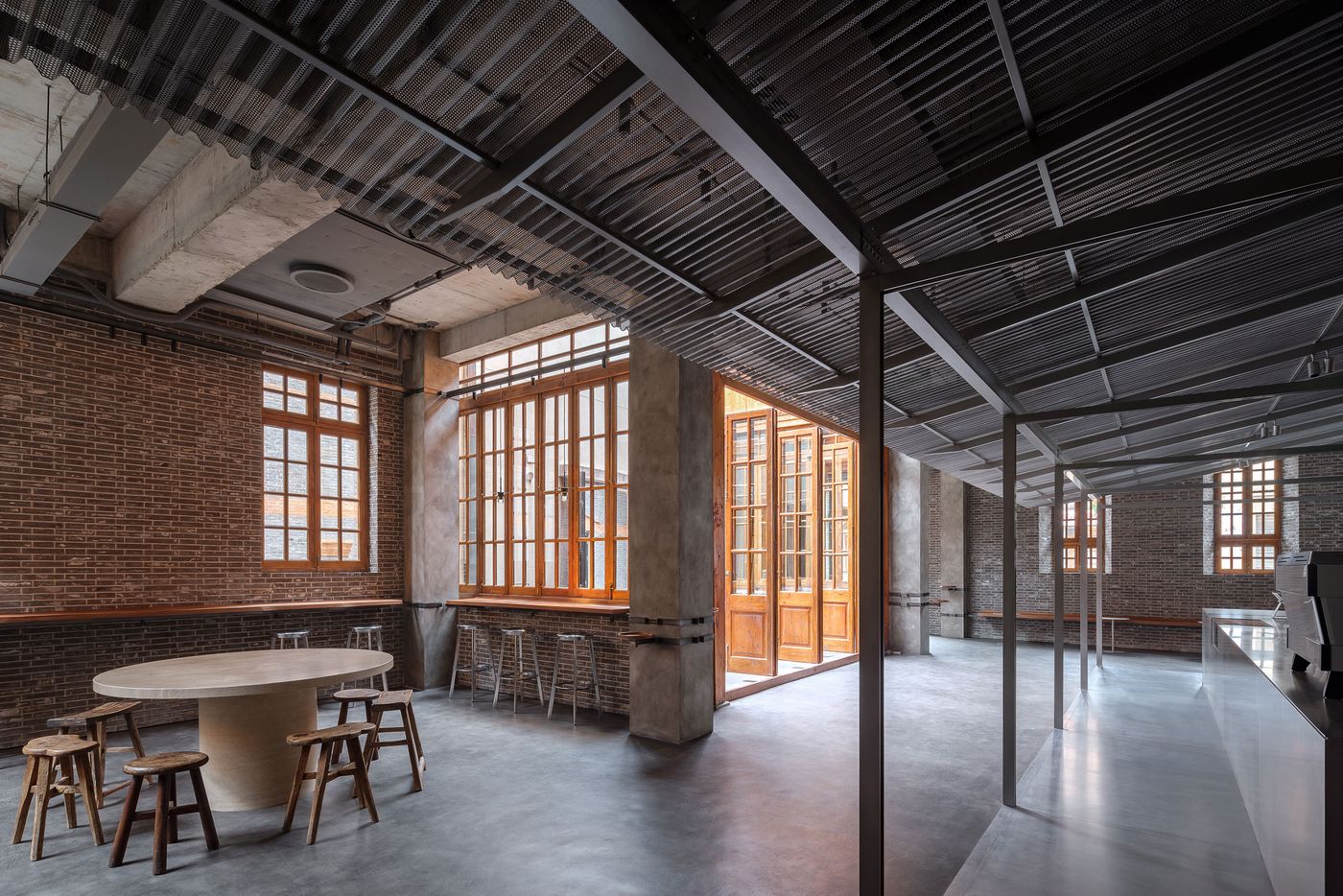
Photography by Zhu Runzi.
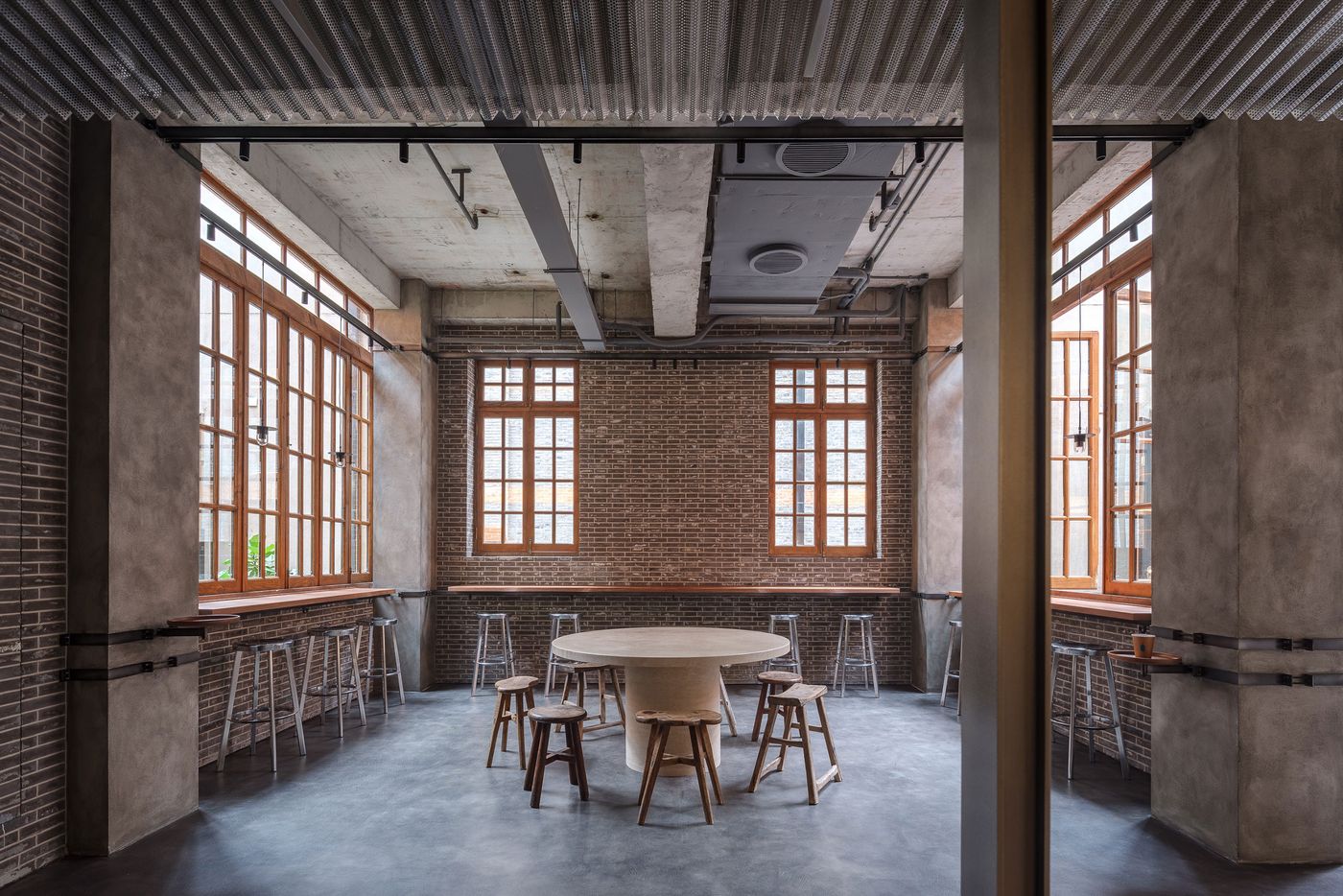
Photography by Zhu Runzi.
Reborn as a commercial development after four year of intensive restoration works, Zhang Yuan was one of the most famous public spaces in Shanghai during the late 19th century, featuring amenities such as a dance hall, opera house, roller-coaster, restaurants and one of the few private gardens open to the public, as well as a community of hundreds of shikumen (meaning "stone-framed door" in Mandarin), traditional Shanghainese townhouses that combine Western and Chinese elements.
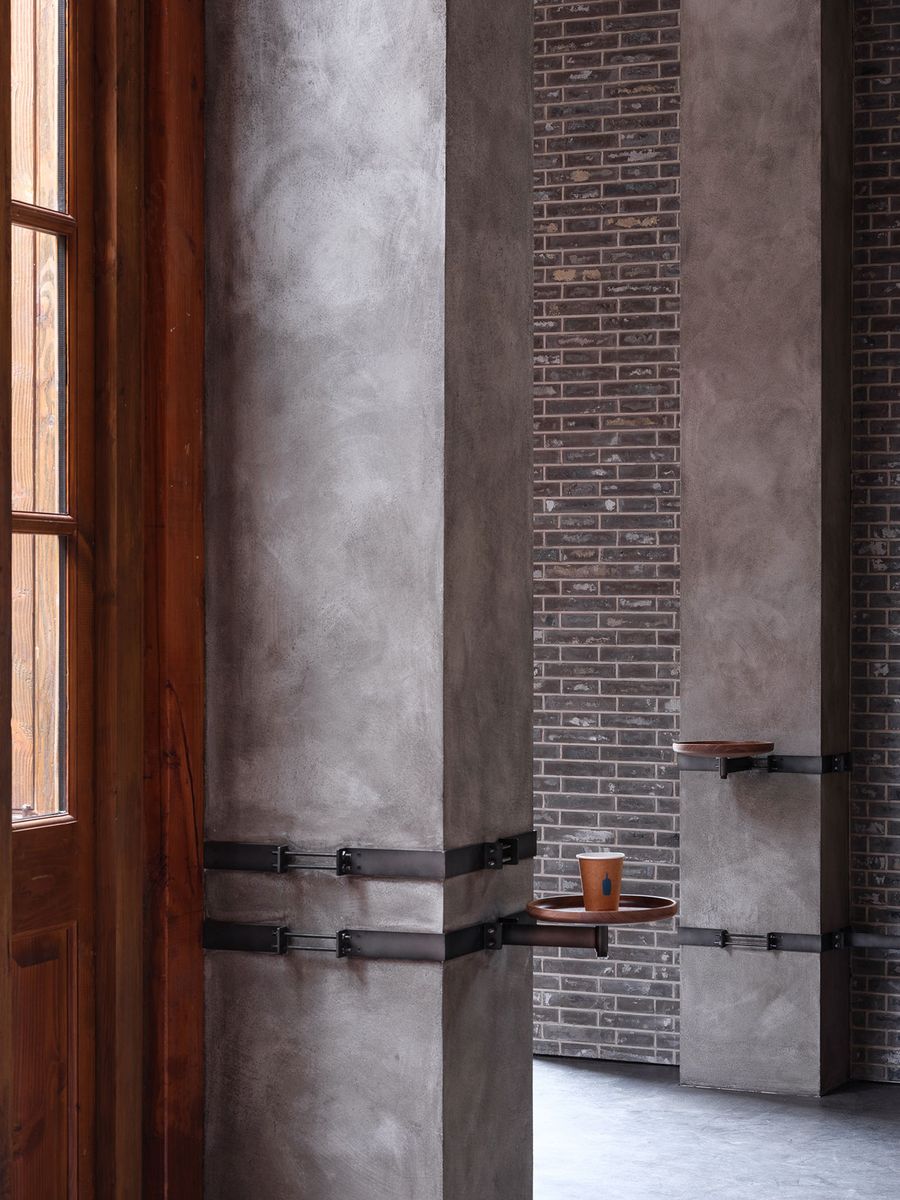
Photography by Zhu Runzi.
Featuring high brick walls and narrow front yards, shikumen-style houses are packed in a row along a narrow alley accessed from the main street through an arched stone gate.The café takes over a couple of the 140-year-old shikumen that have been merged into a single space with the traditional front yards functioning as atriums bringing in natural light. Per the restoration guidelines, Neri & Hu have left the existing brick walls, wooden doors and windows intact, inserting a detached, shed-like structure in the heart of the open-plan space. Combining a slender framework of brushed stainless steel with perforated and corrugated steel roofing, the lightweight structure was conceived as a counterpoint to the heavyweight building shell, which is made all the more massive by the concrete posts and beams which have replaced the original wooden house frame, as well as an allusion to the elemental origins of architecture.
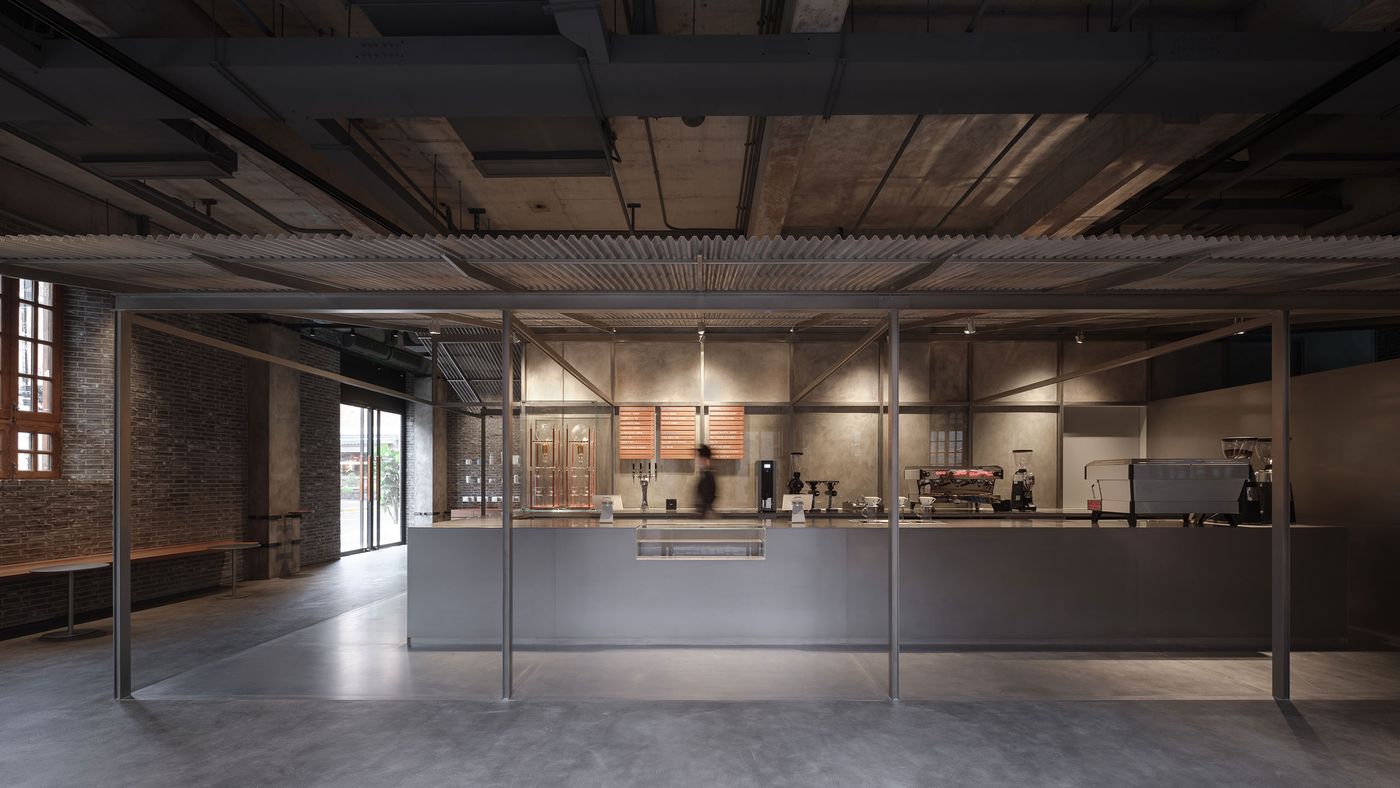
Photography by Zhu Runzi.
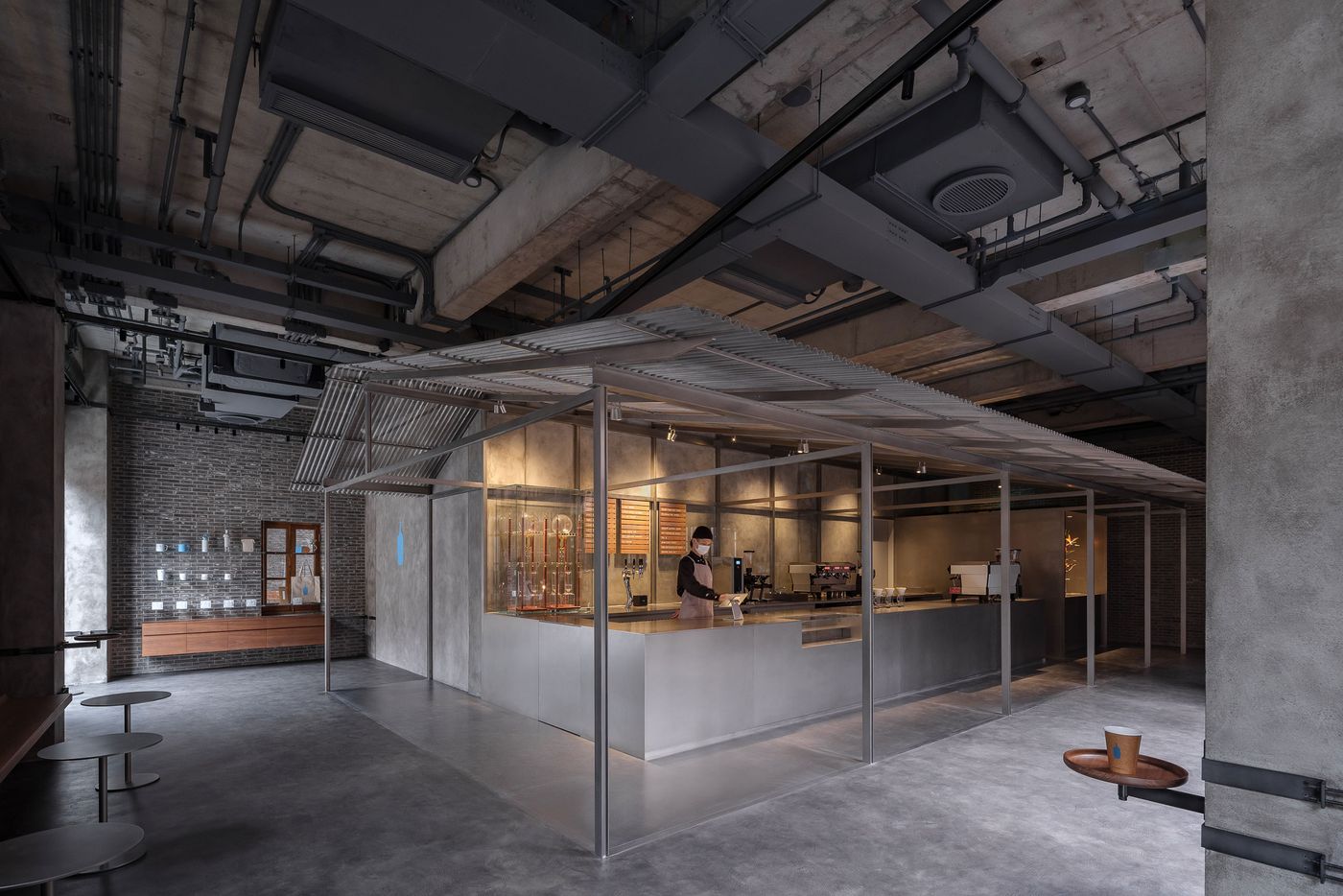
Photography by Zhu Runzi.
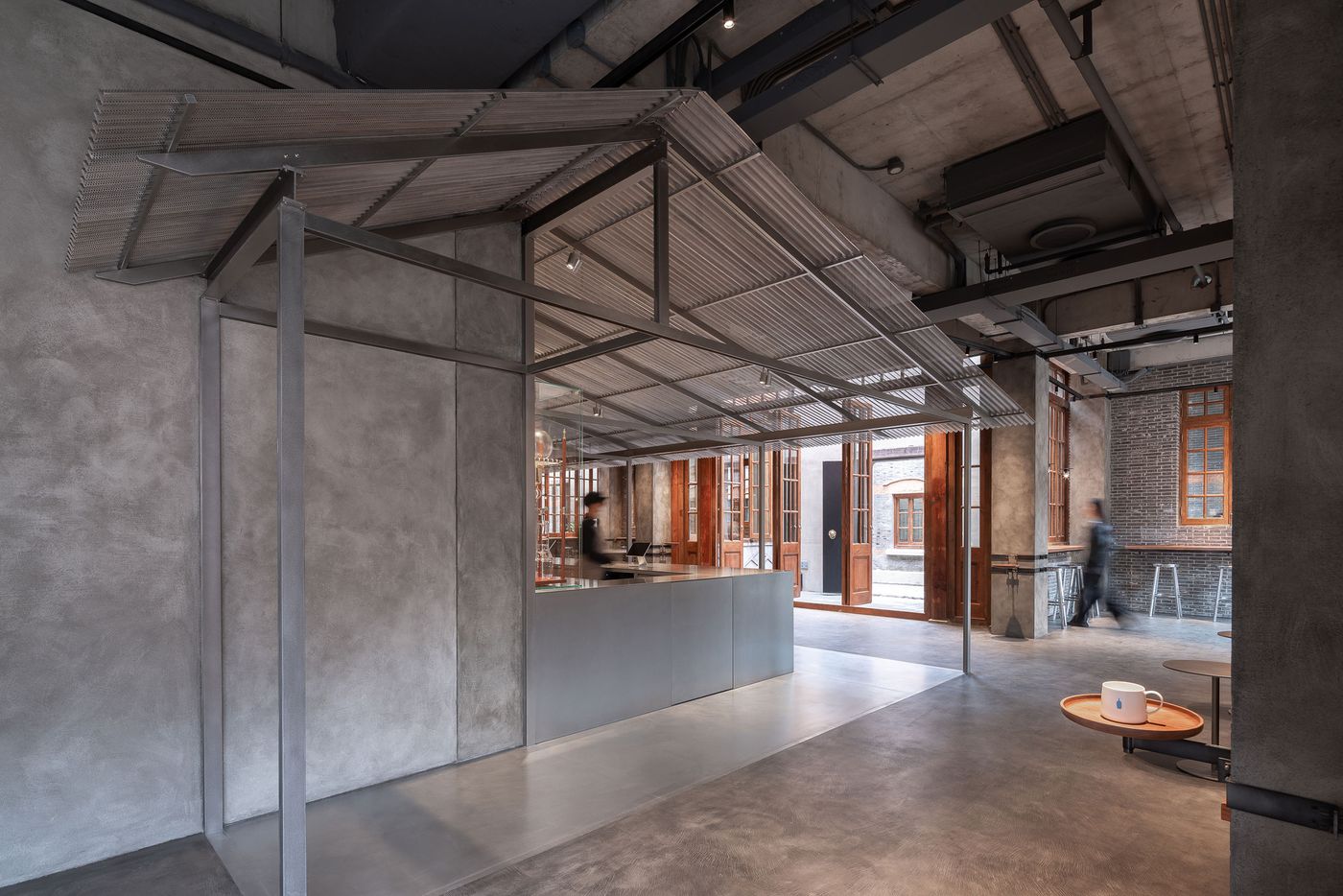
Photography by Zhu Runzi.
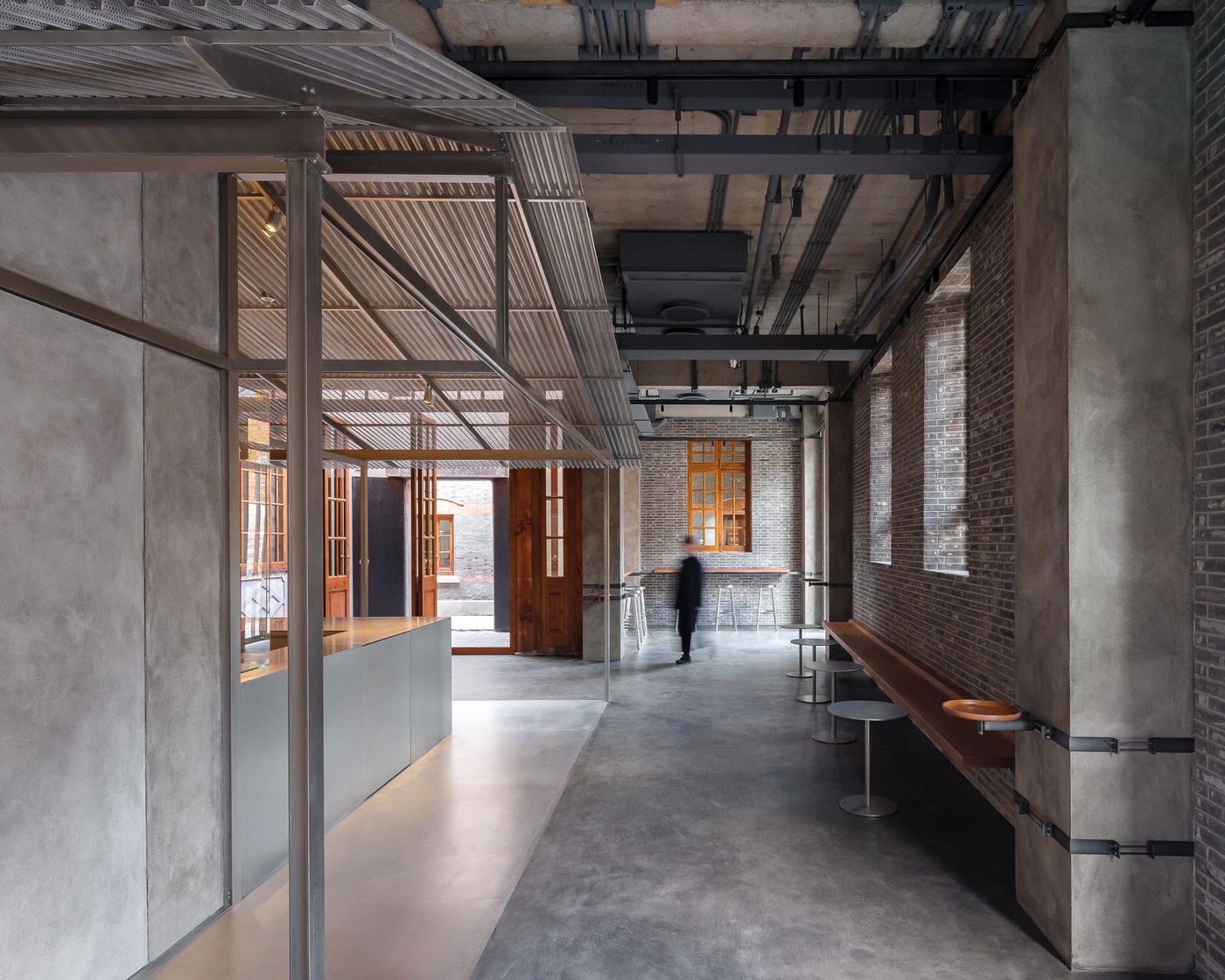
Photography by Zhu Runzi.
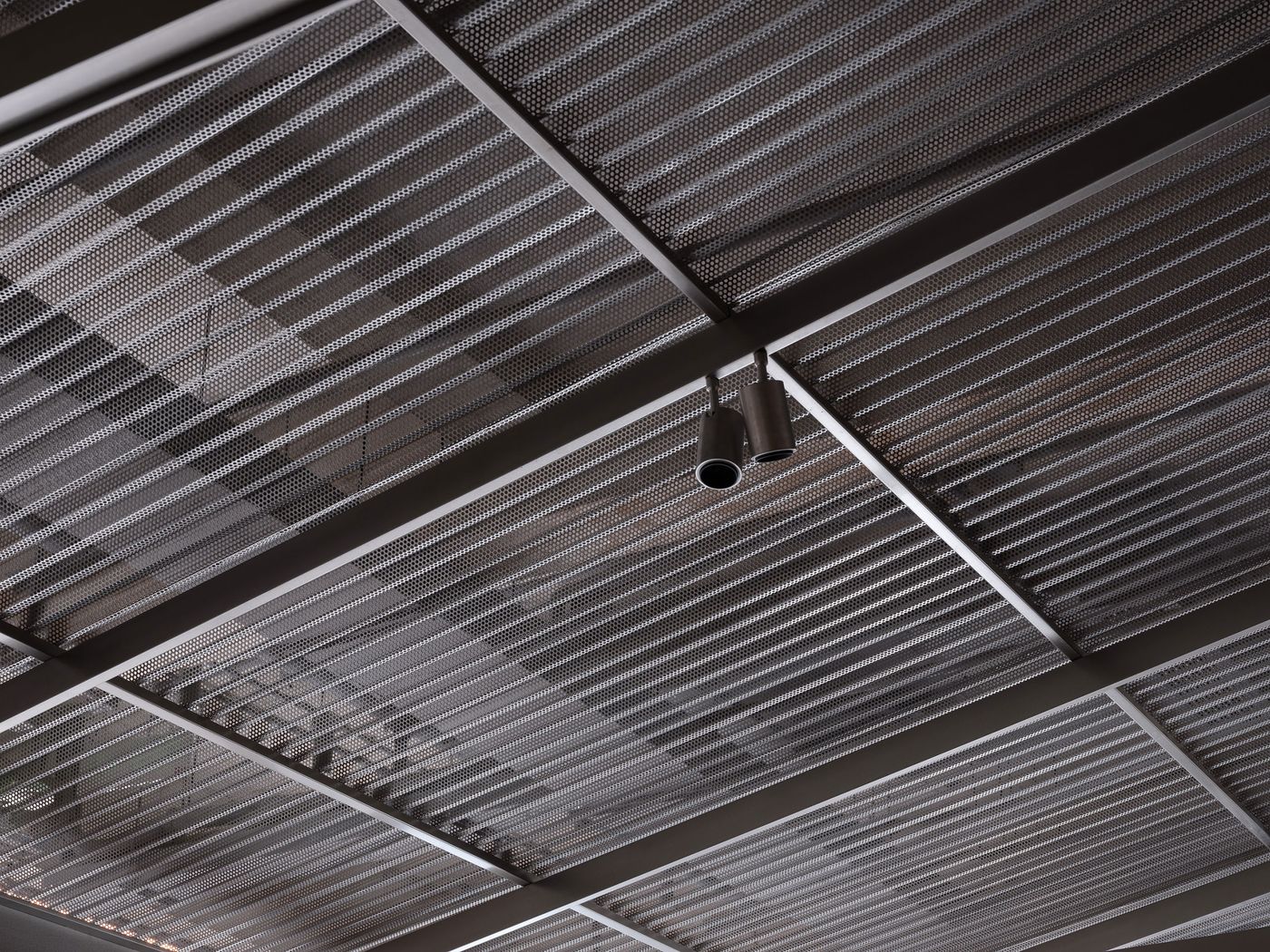
Photography by Zhu Runzi.
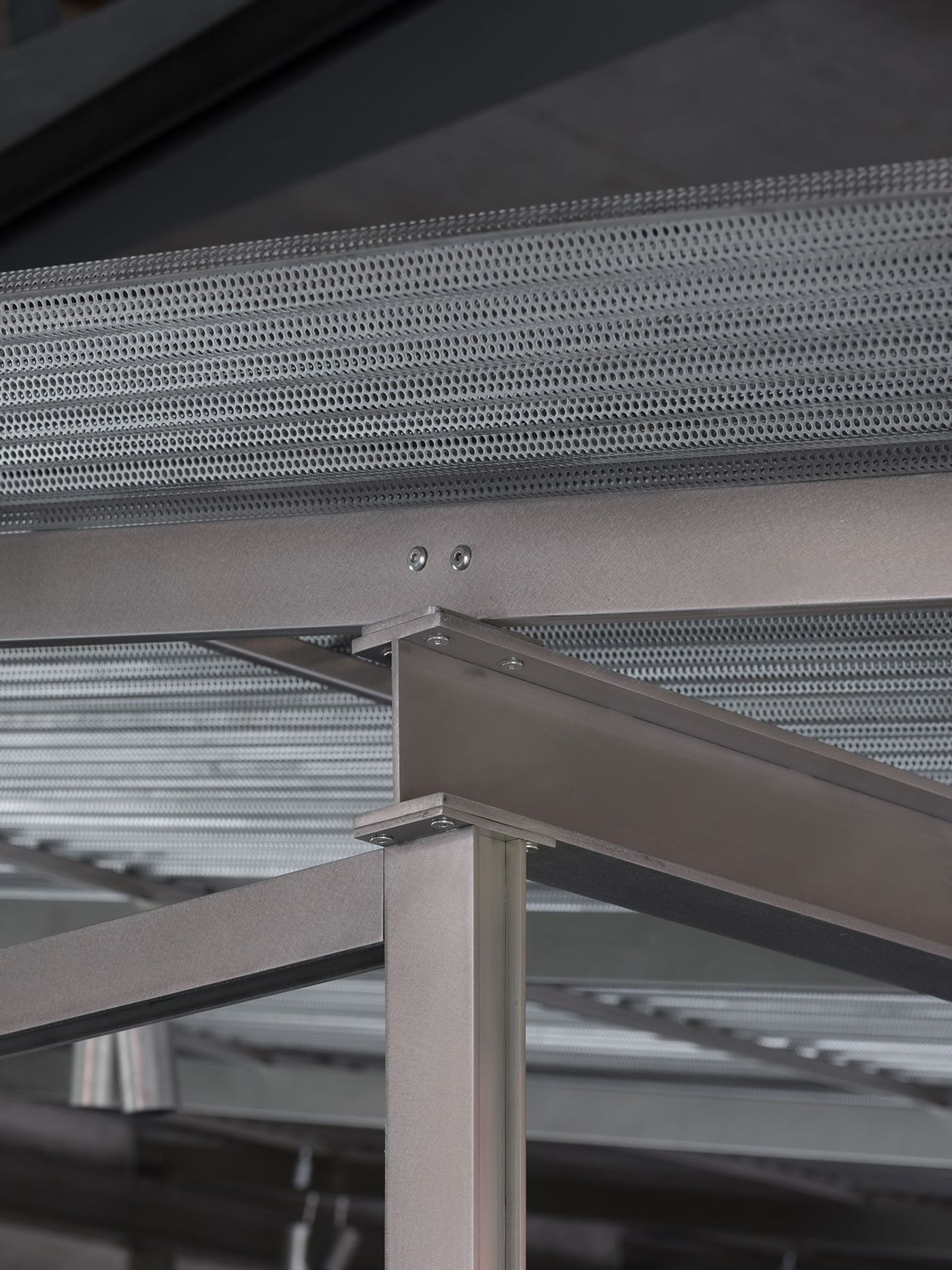
Photography by Zhu Runzi.
Housing the coffee preparation and serving area, the minimalist shed is the café’s visual and circulatory focal point with the rest of the space constituting a fluid zone where patrons can sit on informal seating arrangements including long benches, low stone tables, wooden stools and repurposed vintage furniture. The latter were chosen as a reflection of the traditional shikumen lifestyle, as was the bespoke lighting system which was inspired by clothes-hanging-rods and street lamps. A series of metal brackets attached to the existing columns wherefrom side tables, benches and object displays are cantilevered is yet another nod to the building’s architectural heritage, in particular the informal structures that residents once used to build to extend their house into the alleys.
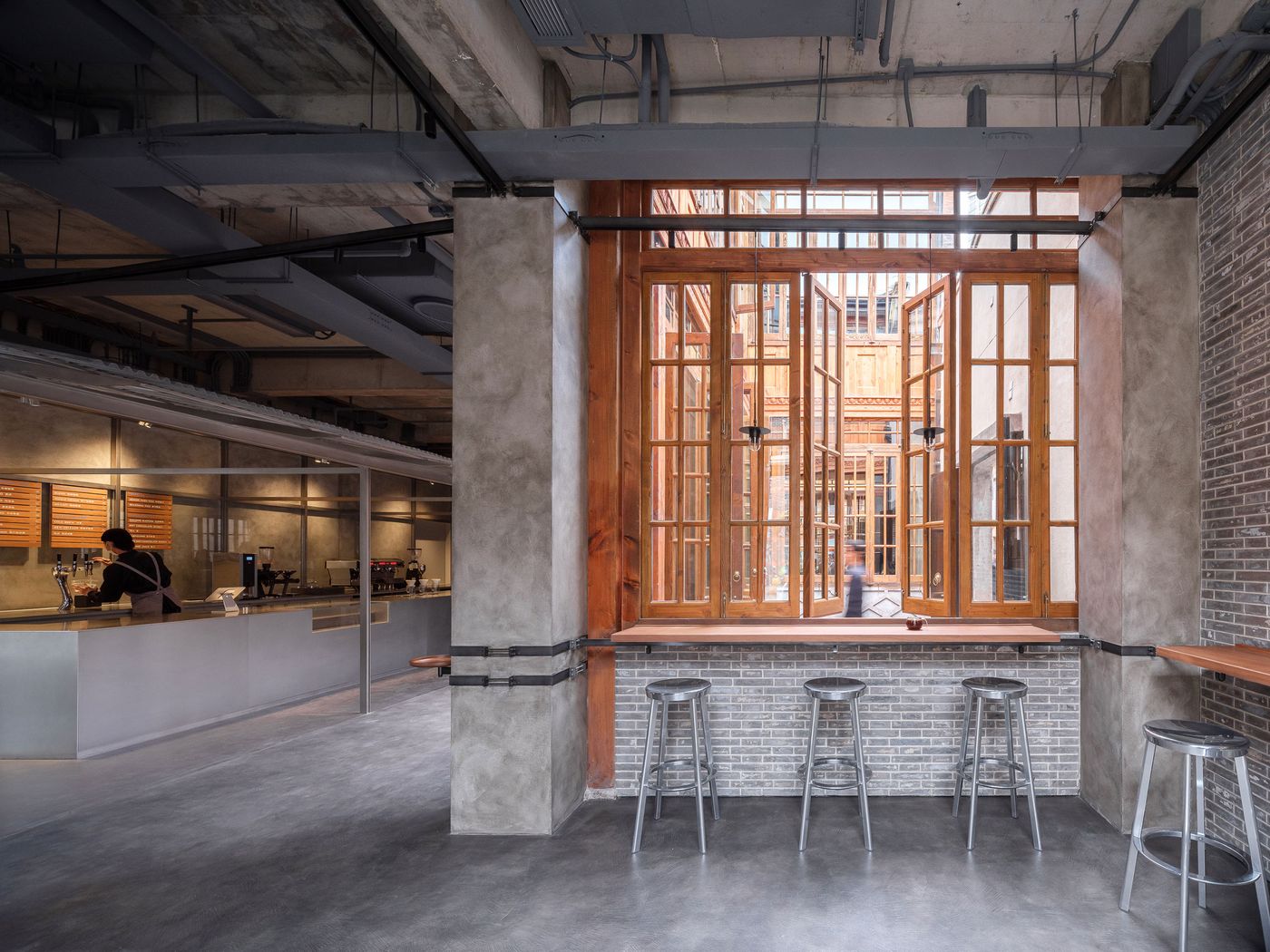
Photography by Zhu Runzi.
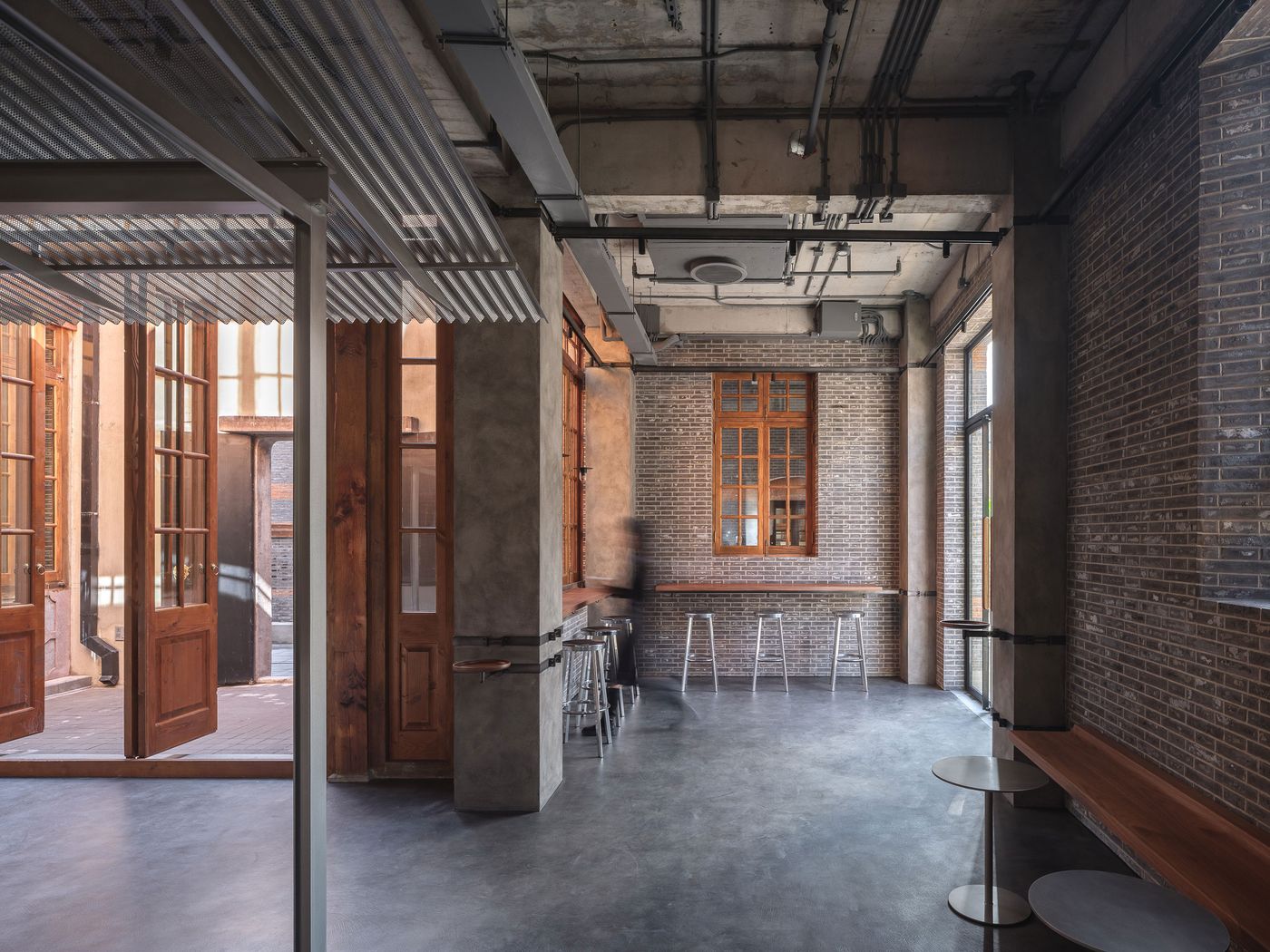
Photography by Zhu Runzi.
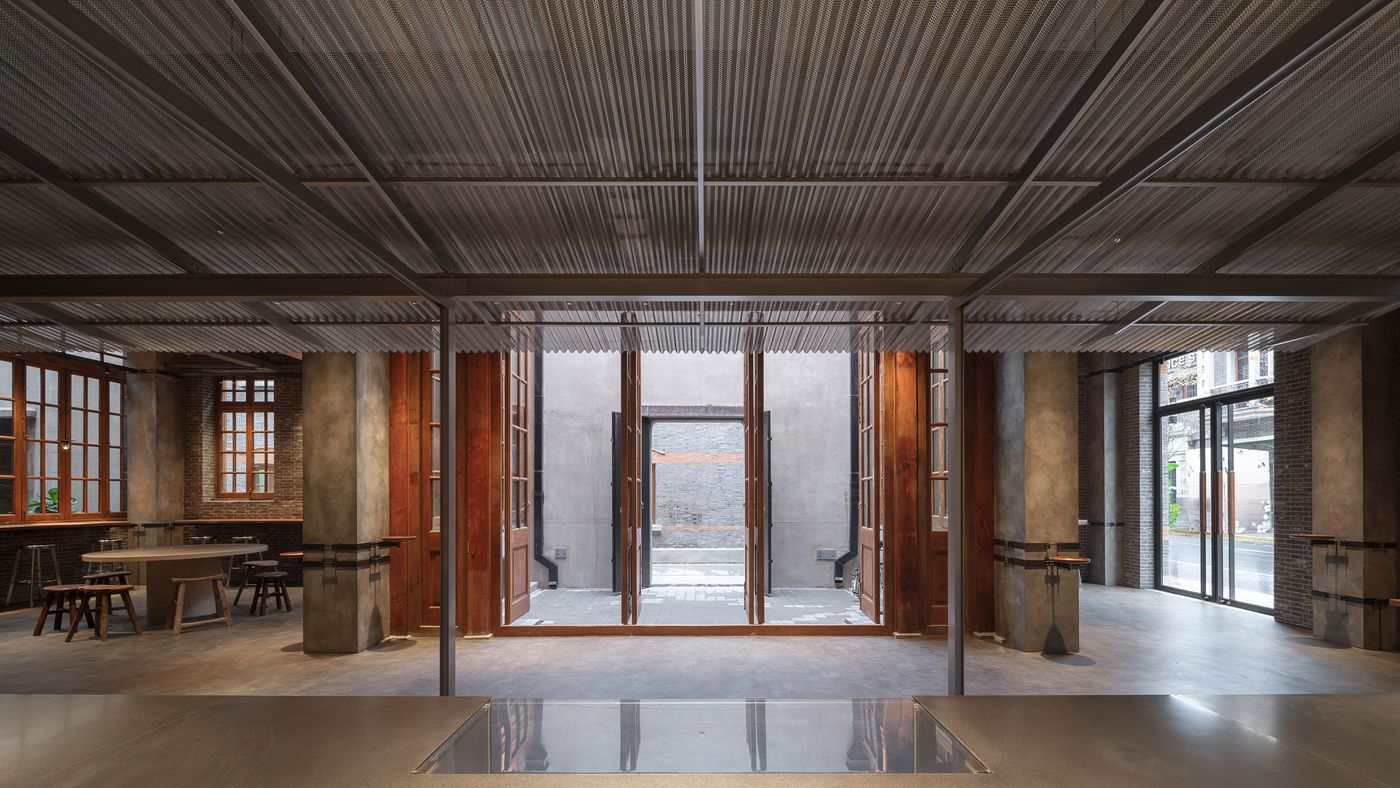
Photography by Zhu Runzi.
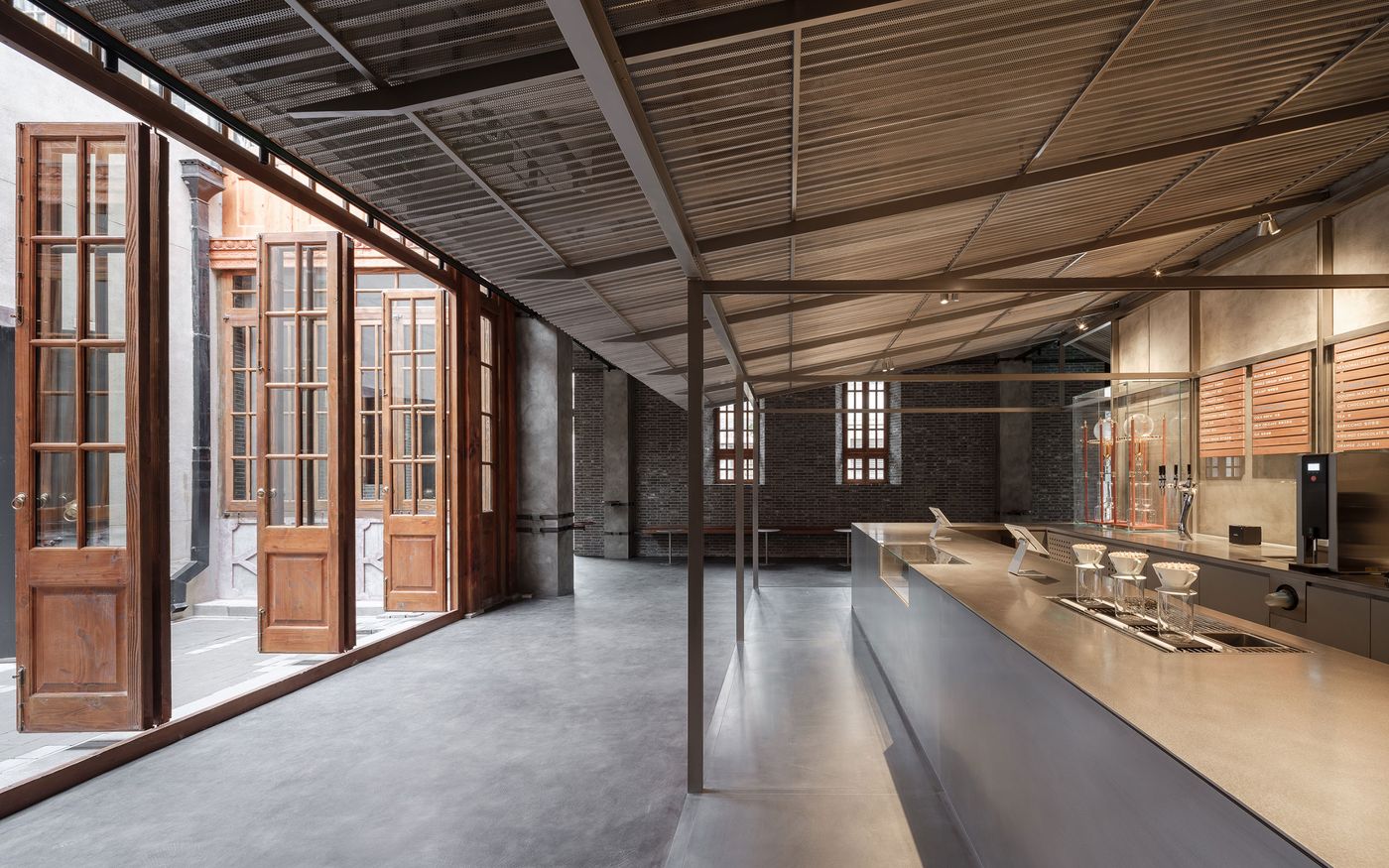
Photography by Zhu Runzi.
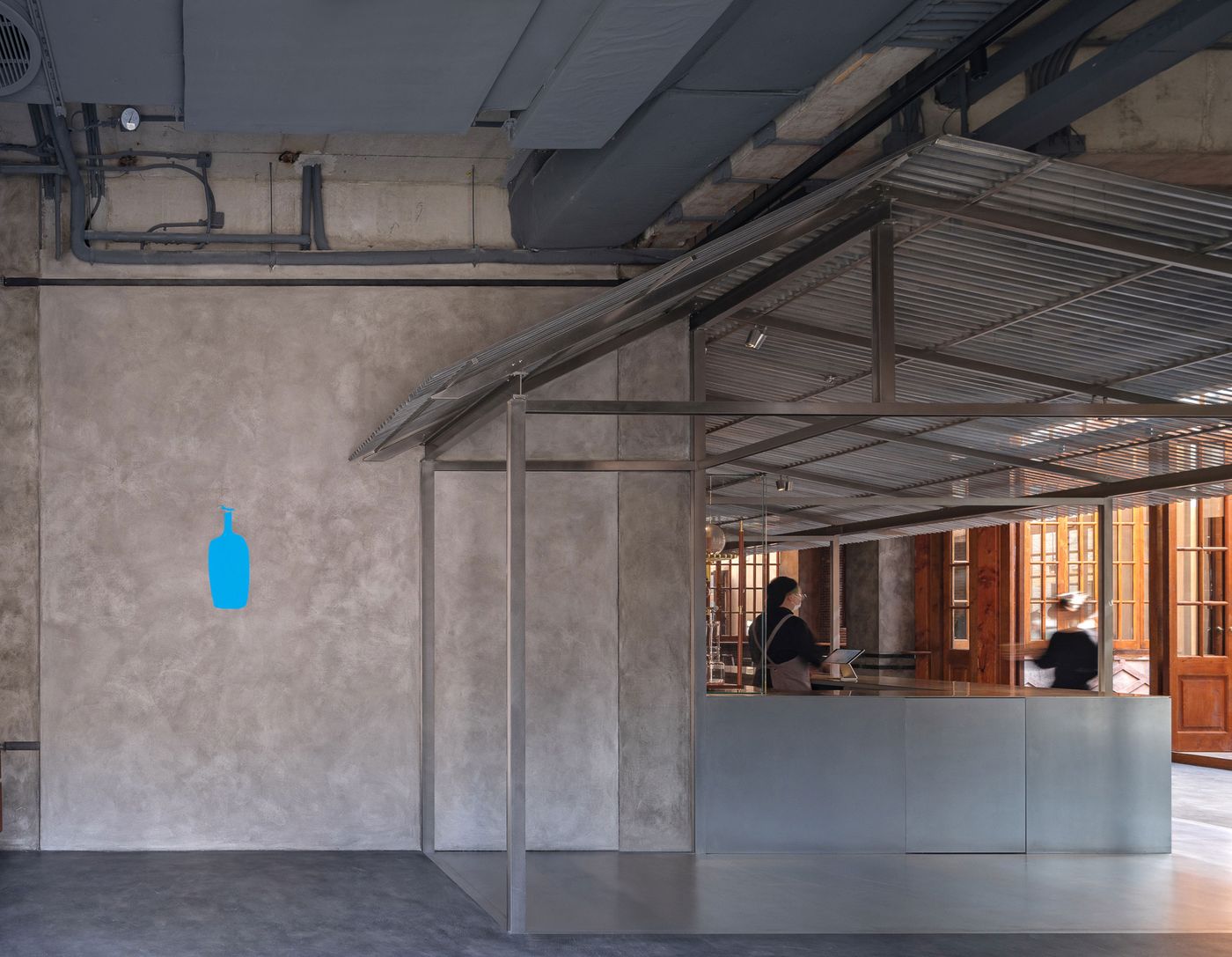
Photography by Zhu Runzi.
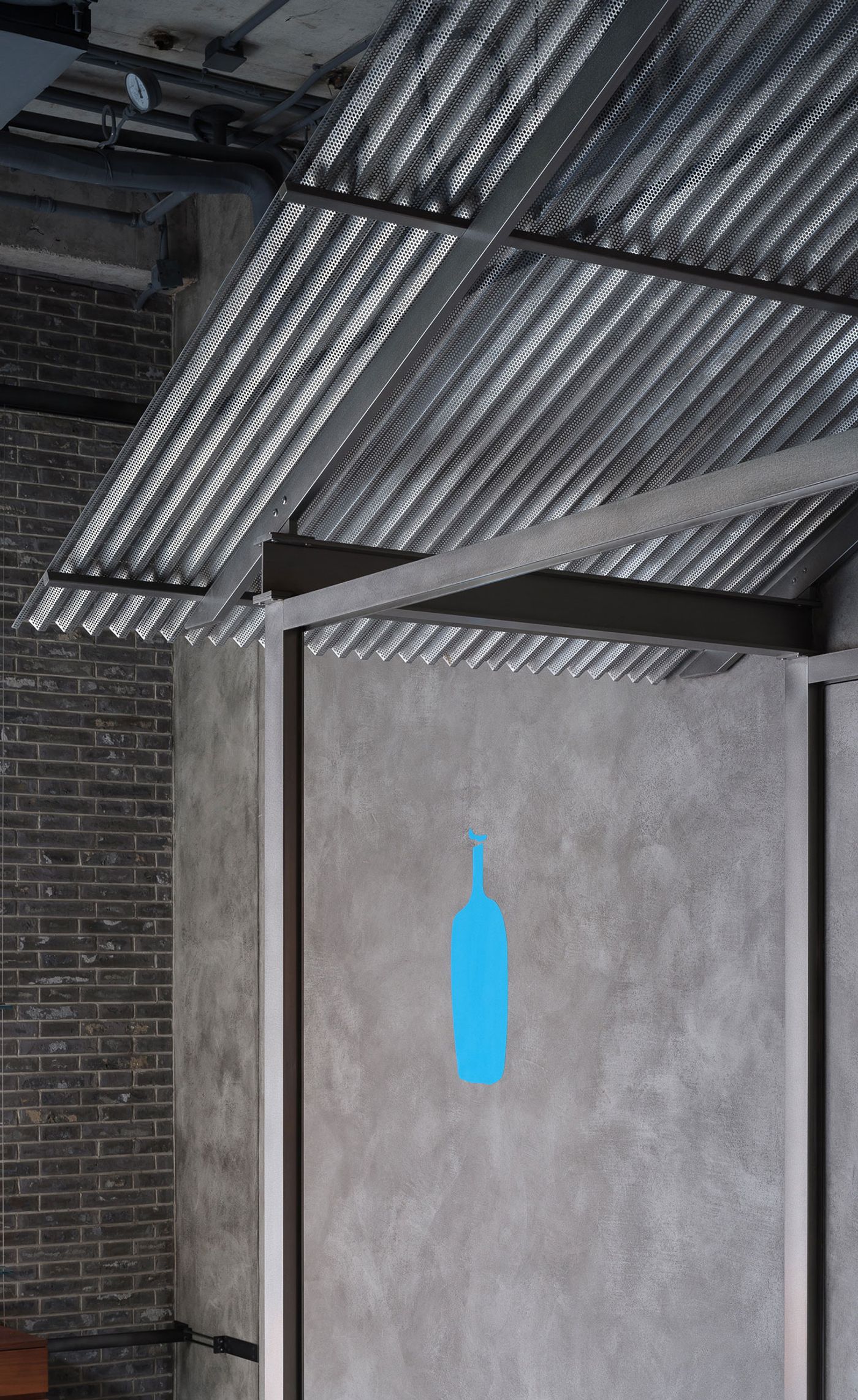
Photography by Zhu Runzi.